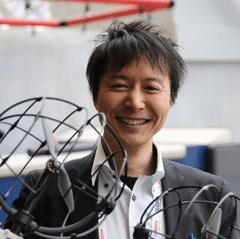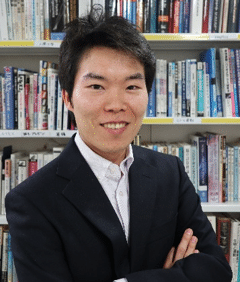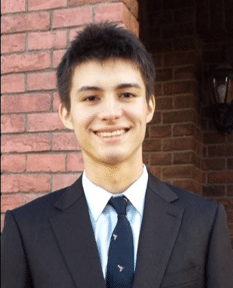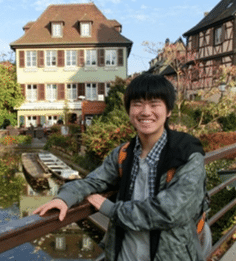| Title | Address | Description |
|---|---|---|
German Federal Agency for Technical Relief | Provinzialstrasse 93 Bonn 53127 Germany | |
Entente pour la Forêt Méditerranéenne | Centre Francis Arrighi - Domaine de Valabre - RD7, 13120 Gardanne, France | |
Merseyside Fire & Rescue Service | Bridle Rd, Bootle L30 4YD, UK | |
Service Départemental d’Incendie et de Secours de la Savoie | 226 Rue de la Perrodière, 73230 Saint-Alban-Leysse, France | |
Hellenic Rescue Team of Attica | Agonaridou 10-12, Athina 117 44, Greece | |
Institute of Communication and Computer Systems | Zografou 157 73, Greece | |
EXUS | Estias 1, Athina 115 26, Greece | |
ASTRIAL GmbH | Rudower Ch 29, 12489 Berlin, Deutschland | |
International Security Competence Centre GmbH | Kaiser Franz Joseph-Ring 21, 2500 Baden, Austria | |
Tohoku University | 980-8579, Japan | |
SINTEF Digital – dept. of Mathematics and Cybernetics | Strindvegen 4, 7034 Trondheim, Norway | |
Commissariat A L’Energie Atomique et Aux Energies Alternatives | D36, 91190 Saclay, France | |
The University of Manchester | Oxford Rd, Manchester M13 9PL, UK | |
German Institute for Standardisation | Saatwinkler Damm 42-43, 13627 Berlin, Germany | |
Trilateral Research Ltd | Gorteens, Waterford, Co. Kilkenny, X91 W0XW, Ireland | |
ARTTIC S.A.S | 58a Rue du Dessous des Berges, 75013 Paris, France |
Tohoku University
6-6-01 Aramaki-Aza-Aoba Aoba-ku
Sendai 980-8579
Japan
Website: www.tohoku.ac.jp/en/

General information
Tohoku University is a top-class national research university established 3rd in Japan having three core values of ‘research first’, ‘open-doors,’ and ‘practice-oriented research and education’. Tadokoro Laboratory researches into rescue robotics for response, recovery and prevention of disaster for 25 years, and has a history of developing various rescue robots, leading major national projects on disaster robotics, and applying robots to disasters including the Fukushima Daiichi Nuclear Power Plant accident.
Role in the project
Tohoku University will be in charge of design and prototype hardware development of miniaturized robots SMURF for searching victims in debris cones on the basis of its past achievement of disaster robotics. The final target SMURF V2 will have superior mobility of drop/stop/move in confined space of rubbles by applying soft robotics, and have advanced sensors such as the sniffer developed by WP2, cameras, thermography, microphone, GPS, etc. for detecting living signals from victims. It will also develop a previous version SMURF V1 at the first stage for accelerating the whole project by providing a platform and for testing components.
Participating members in the project

Satoshi Tadokoro
Satoshi Tadokoro graduated from the University of Tokyo in 1984. He was an associate professor in Kobe University in 1993-2005, and has been a Professor of Tohoku University since 2005. He was a Vice/Deputy Dean of Graduate School of Information Sciences in 2012-14, and is the Director of Tough Cyberphysical AI Research Center since 2019 in Tohoku University. He has been the President of International Rescue System Institute since 2002, and was the President of IEEE Robotics and Automation Society in 2016-17. He served as a program manager of MEXT DDT Project on rescue robotics in 2002-07, and was a project manager of Japan Cabinet Office ImPACT Tough Robotics Challenge Project on disaster robotics in 2014-19 having 62 international PIs and 300 researchers that created Cyber Rescue Canine, Dragon Firefighter, etc. His research team in Tohoku University has developed various rescue robots, two of which called Quince and Active Scope Camera are widely-recognized for their contribution to disaster response including missions in the Fukushima-Daiichi NPP nuclear reactor buildings. IEEE Fellow, RSJ Fellow, JSME Fellow, and SICE Fellow.

Kenjiro Tadakuma
Kenjiro Tadakuma is an Associate Professor of the Graduate School of Tohoku University from May 2015. He received his PhD degree in mechanical and aerospace engineering from the Tokyo Institute of Technology in 2007. His research interests mainly include robotic mechanisms omnidirectional mobile robots, gripper mechanism with stiffness-changing as a viewpoint of softrobotics. His mechanism team is the winner of the IEEE ICRA Best Paper Award on Mechanisms and Design May 22, 2019.

Masahiro Watanabe
Masahiro Watanabe is an Assistant Professor of the Graduate School of Tohoku University from April 2018. He received his DEng degree in mechanical and control engineering from the Tokyo Institute of Technology in 2018. His main research interests are soft robotics, which includes pneumatic actuators, traveling wave locomotion, stiffening mechanisms, and rheology.

Yu Ozawa
A first-year master’s student at the Graduate School of Information Sciences, Tohoku University. Graduated from the Department of Electrical, Information and Physics Engineering, School of Engineering in 2019. His research interest is search and rescue robots.

Tori Shimizu
A second-year master’s student at the Graduate School of Information Sciences, Tohoku University. Graduated from the Department of Mechanical and Aerospace Engineering, School of Engineering, Tohoku University in 2018. His main research interests are magnetic mechanisms with a small control force using the Internally-Balanced Magnetic Unit.


